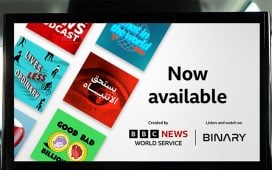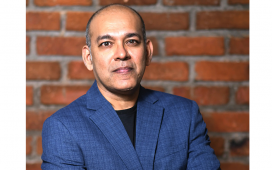
In the ever-evolving landscape of social media, influencers wield immense power. Their reach extends far beyond mere follower counts; they shape opinions, drive trends, and impact brand perception.
However, recent events have underscored the need for brands to tread carefully when choosing their influencer partners.
A cautionary tale
A Saudi influencer found herself at the centre of a storm after criticising Dubai airport during unprecedented floods. Her words, amplified by her substantial following, triggered backlash and scrutiny. This incident serves as a stark reminder: with great influence comes even greater responsibility.
Beyond follower counts
When evaluating influencers, look beyond mere follower counts. While it’s tempting to choose the influencer with the largest following, this approach can be misleading. Instead, consider the following metrics:
Engagement rate: This metric reflects the level of interaction between an influencer and their followers. High engagement rates indicate an active and attentive audience. Nano- and micro-influencers (with smaller follower counts) often have more engaged audiences than mega-influencers. Brands should prioritise influencers whose followers genuinely connect with their content.
Audience demographics: Understand the influencer’s audience. Are they aligned with your brand’s target demographic? Consider factors like age, location, interests, and values. An influencer whose followers match your customer profile is more likely to drive meaningful engagement.
Authenticity: Authenticity matters. Brands should assess an influencer’s credibility, transparency, and consistency. Look for genuine connections between the influencer and their audience. Authenticity builds trust and minimises the risk of backlash.
Context matters
Before partnering with an influencer, conduct thorough research:
Content alignment: Review the influencer’s past content. Does it align with your brand’s values and messaging? Ensure that their tone, style, and themes resonate with your brand.
Brand safety: Investigate any potential red flags. Has the influencer been involved in controversies or sensitive issues? Brands must avoid associations that could harm their reputation.
Cultural sensitivity: The Middle East is culturally diverse. Understand local customs, traditions, and sensitivities. An influencer who respects these nuances is less likely to cause unintended offense.
Collaboration guidelines
Campaign briefs: Provide detailed briefs to influencers. Clearly outline campaign objectives, messaging, dos and don’ts, and any cultural considerations. Misunderstandings can lead to a backlash.
Transparency: Be transparent about the partnership. Disclose sponsored content appropriately. Authenticity builds trust, while hidden sponsorships can backfire.
Have a plan:
Even with careful selection, crises can occur. Brands should be prepared:
Monitoring and listening: Continuously monitor influencer content. Address any issues promptly. Social listening tools can help detect early signs of backlash.
Response strategy: Have a crisis communication plan. Respond swiftly, transparently, and empathetically.
Acknowledge mistakes and take corrective action. Having said that, a well-planned and executed influencers campaign can be very rewarding in KSA, with the following being some of the benefits:
Authenticity and trust
In KSA, authenticity matters. Influencers have built genuine connections with their followers over time. Their recommendations and endorsements carry significant weight.
When an influencer aligns with your brand, their endorsement acts as a form of social proof. Audiences trust influencers because they perceive them as experts within their niches. By partnering with authentic influencers, brands can tap into this trust and establish credibility.
Cultural relevance
KSA has a rich cultural heritage, and influencers understand the nuances of local customs, traditions and sensitivities. They can tailor content to resonate with Saudi audiences.
Whether it’s celebrating Saudi National Day or highlighting local products, influencers bring a sense of cultural relevance. Brands benefit from this localisation, as it fosters deeper connections and ensures that messaging aligns with the Saudi context.
Engagement and reach
Influencers in KSA have substantial followings across platforms like Instagram, Twitter, and Snapchat. Their engagement rates often surpass those of global influencers. By collaborating with KSA-based influencers, brands gain access to a wide audience.
Whether it’s promoting a product, launching a campaign, or raising awareness, influencers amplify reach and drive meaningful engagement.
Creativity and storytelling
Saudi influencers excel at storytelling. They weave narratives that resonate with their followers. Whether it’s showcasing a brand’s journey, sharing personal experiences, or creating captivating content, influencers infuse creativity into campaigns.
Their ability to blend brand messaging with relatable stories ensures that campaigns leave a lasting impact. In the age of cancel culture, influencer partnerships demand strategic thinking. Brands must choose wisely, considering metrics, context, and cultural nuances.
Remember, with great influence comes even greater responsibility. By following these guidelines, brands can forge successful influencer collaborations while minimising the risk of backlash. Let’s create a positive influencer landscape in the Middle East.
By Najla Al Madar, Influencers Marketing Executive at Hashtag









